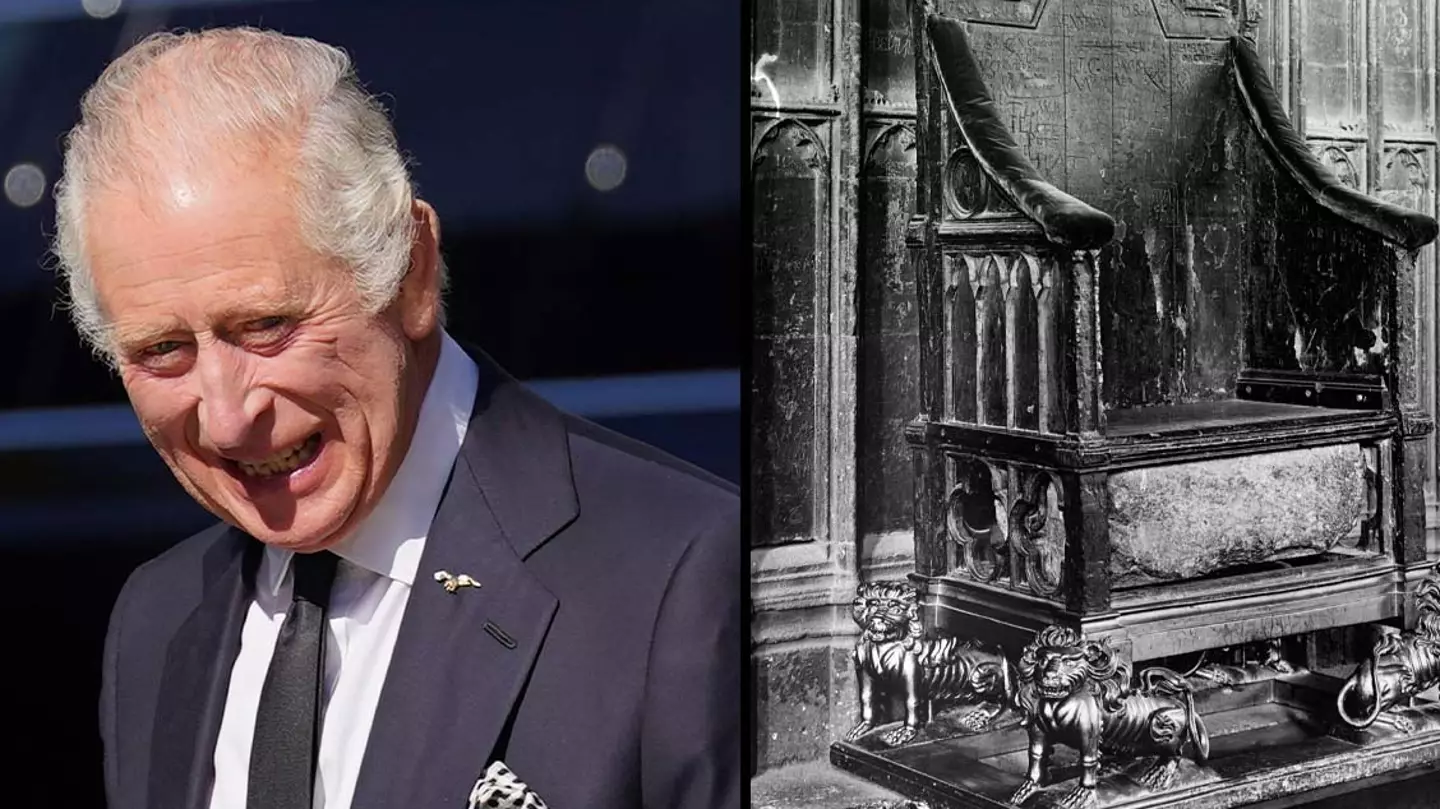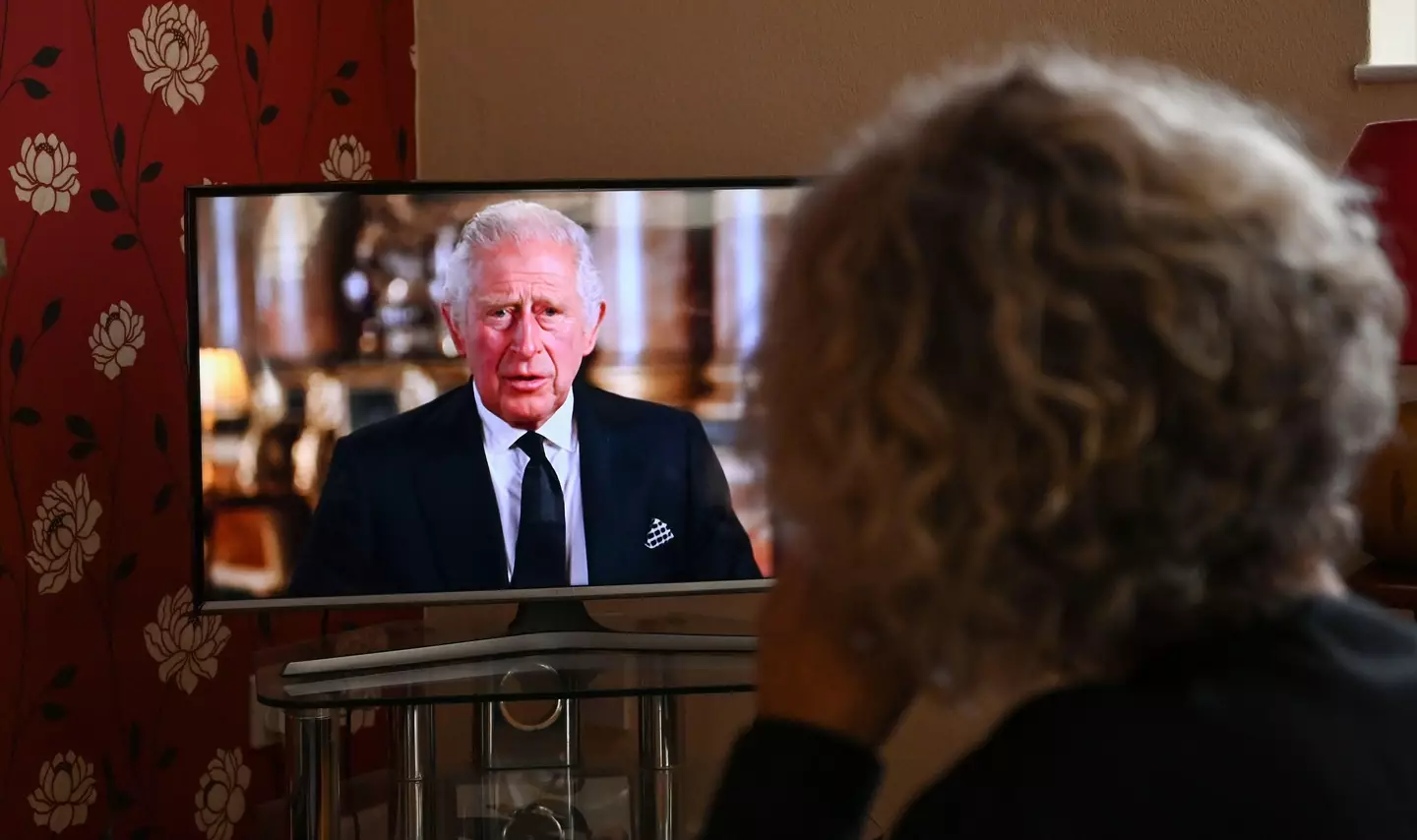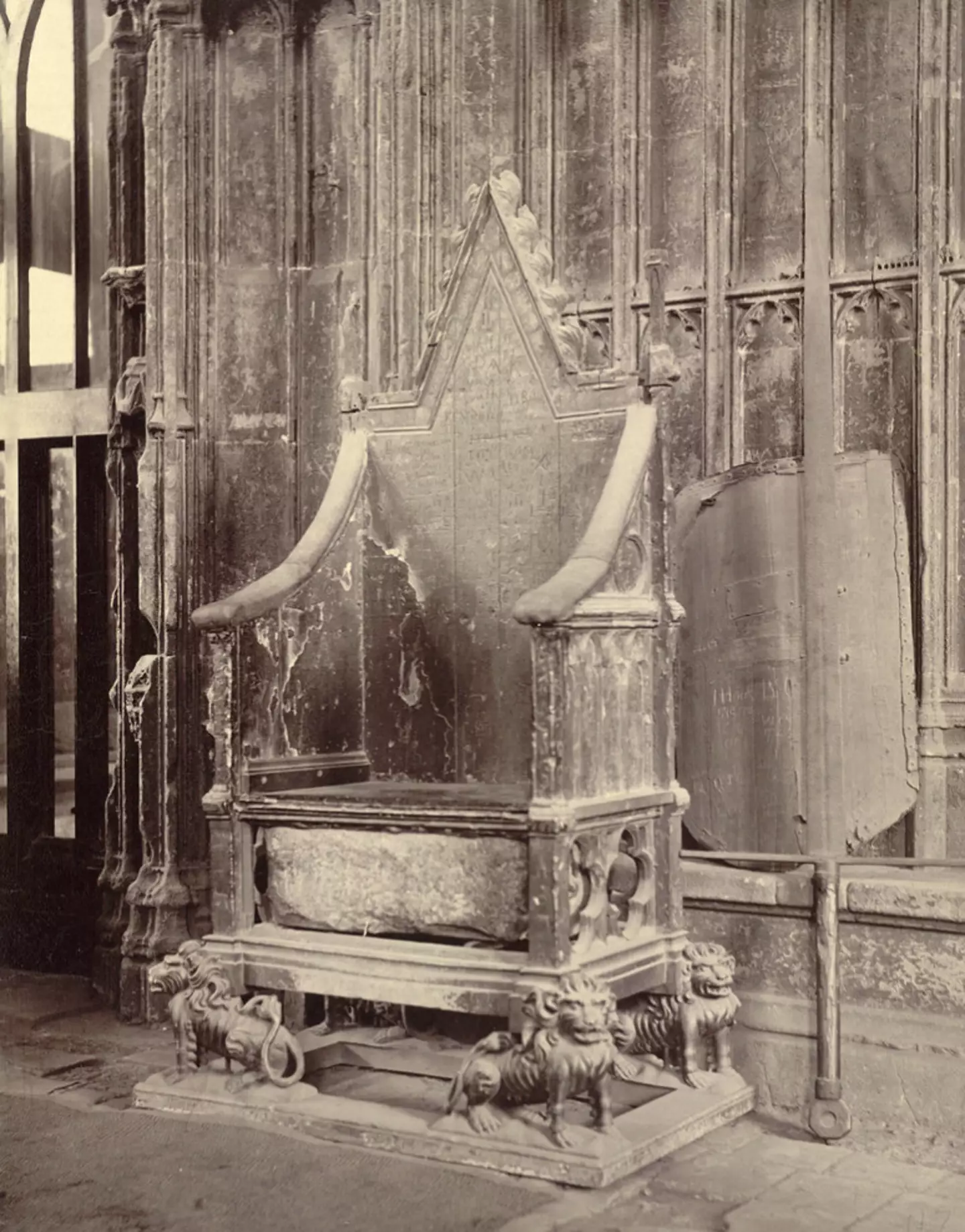
A historic stone that dates back to 841 AD and is known as the ‘Stone of Destiny’ will be used during King Charles III’s coronation. No, that wasn’t the synopsis for a new Tolkien-calibre Netflix show.
The stone is one of the most important artefacts that’ll be used during Charles’ official crowning, and is currently housed in Edinburgh Castle, but will be moved down to London ahead of the ceremony, expected to take place next year.
Described as 'coarse-grained, pinkish buff sandstone,' the Stone of Destiny is an ancient symbol of the Scottish monarchy and has been used for the inauguration of monarchs for hundreds of years.

A spokesperson for Historic Environment Scotland (HES) confirmed to My London: “HES staff will move the Stone of Destiny to Westminster Abbey in advance of the Coronation and then return it to Scotland."
Advert
Originally kept in Perthshire’s Scone Palace, King Edward I of England took the stone from Scotland during a 1296 invasion and placed it in Westminster Abbey.
It was finally returned to Scotland on St Andrew’s day in 1996.
During Her Majesty’s crowning in 1953, the Queen sat above the stone, three years after it was famously stolen by four Scottish students from Westminster Abbey.
Months later, the Stone of Destiny was found 500 miles away at the high altar of Arbroath Abbey.
Advert
Aside from the stone, other artefacts used during the Queen’s coronation in 1953 included the Diamond Diadem crown, which was made in 1820 for George IV’s coronation by royal jewellers Rundell, Bridge & Rundell.
The late monarch also wore her coronation dress and robe and held the Sovereign’s Orb and Sceptre.
Her Majesty signed the Oath with a pen made of gold and ivory and offered by the Worshipful Company of Scriveners.
It also featured the Scriveners' motto: Litera Scripta Manet - which means the written word remains.

Although King Charles III’s official coronation isn’t expected to happen for months to come, he immediately ascended to the throne after the death of his mum, Queen Elizabeth II.
Advert
Not only is it deemed respectable to allow a sufficient time period of mourning to take place before a new sovereign is crowned, but an enormous amount of preparation will take place before the ceremony.
For example, the late Queen's coronation took place on 2 June 1953, more than a year after she ascended the throne.
Featured Image Credit: PA Images/Alamy Stock PhotoTopics: Royal Family, The Queen, King Charles III
